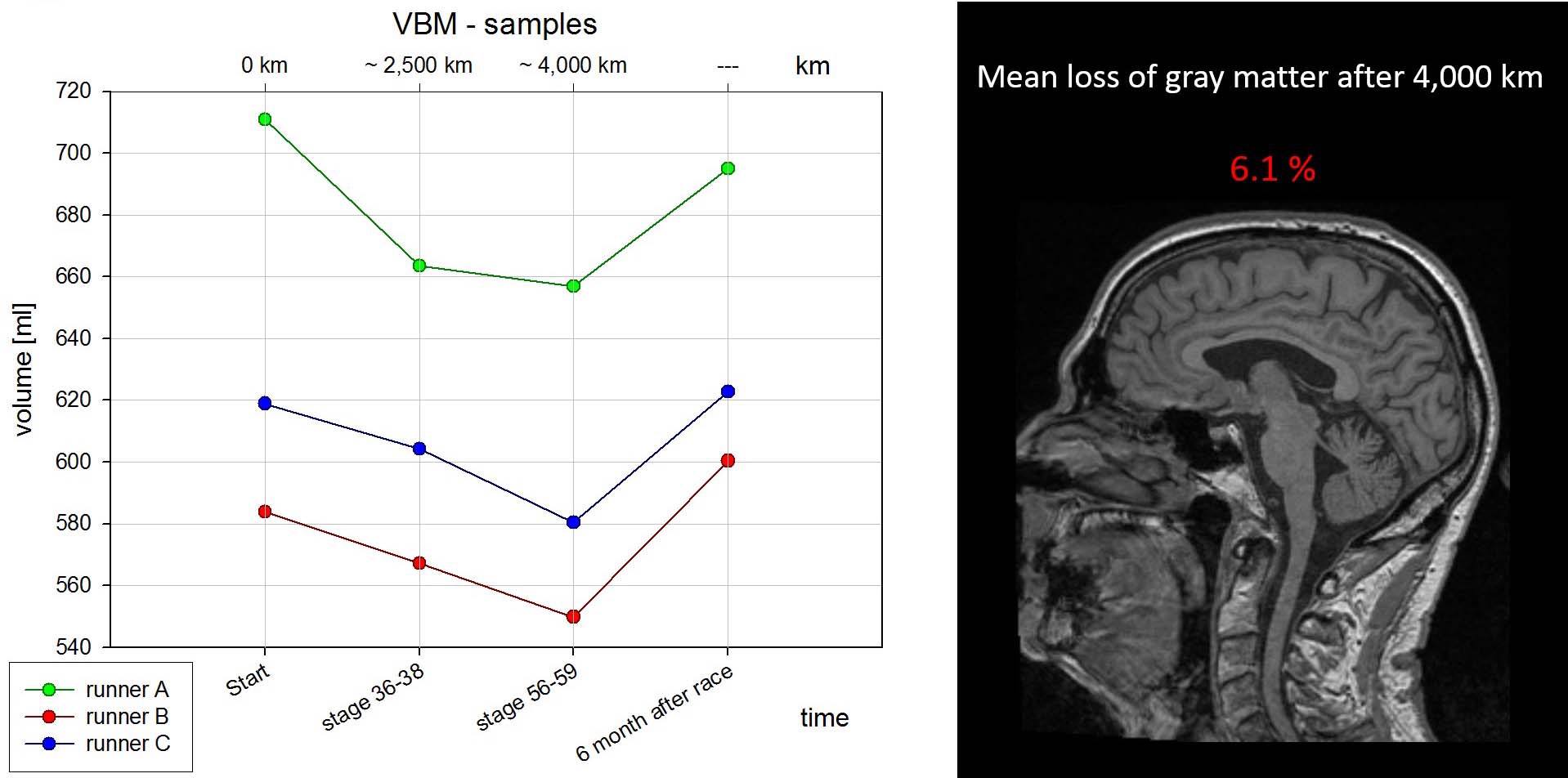Research background
Dr Shütz and his team studied a group of 44 ultramarathon runners participating in the TransEurope-FootRace (TEFR), a 64-day race spanning 4487km (2788 miles) from southern Italy to the Northern Cape of Norway without a single day’s rest. This is like doing around 100 marathons in a row. They examined the effect of the extreme long distance running on the musculoskeletal system (that is the bones, joints, cartilage, muscles and tendons) but the study also revealed some interesting findings about the brain. “Our research provides detailed information on how the various organ systems change and adapt in response to that stress” says Dr Shütz, describing the goals of the study. The researchers scanned the runners’ brains to see how the marathon impacted brain volume.
Findings
At the end of the race, the MRI brain scans revealed a 6.1% decrease in the grey matter (the bulk of the brain) of the runners predominantly affecting specific areas. The scan (image above) taken from the study shows the brain volume decreasing as you follow the dotted lines from left to right, through the different stages of the race. Shütz thinks that the loss of brain volume is due to understimulation. One of the four main regions of the brain that appears to be particularly affected is the area that is involved in visual processing. Shütz postulates that viewing nothing more than long roads for 64 days resulted in that part of the brain being unstimulated hence the reduction in volume. Others believe that the change is due to a concept called structural neuroplasticity. This is where the brain reorganizes and changes itself structurally based on the environment. A good example of structural neuroplasticity, comes from a study that found that London taxi drivers have a larger part of the brain involved in navigation than London bus drivers. This makes sense, as taxi drivers have to navigate all around London, while bus drivers are limited to the set route. Their environment has affected the structure of their brains. In the case of the marathon runners, it is suggested that the reorganization in the brain could occur in areas involved in the motivational process and the levels of exertion experienced due to the nature of the race.
So, what should you do?
You don’t have to throw your runners over the power line, just yet. There is no evidence to suggest that running around the park has any impact on brain size, in fact regular exercise may increase brain size. “Although the finding on the loss of grey matter volume while running is astonishing” Dr. Schütz said, “It is not cause for alarm”. Remember, this study was conducted on ultramarathon runners on a nonstop 64-day race. As for the brain, “It is hard to explain what’s going on…” Lead researcher, Dr. Schütz told New Scientist. “But we do see total recovery after six months.” So when you’re planning your next ultramarathon, make sure to account for 6 months brain recovery! Featured photo credit: Chanan Greenblatt via unsplash.com
